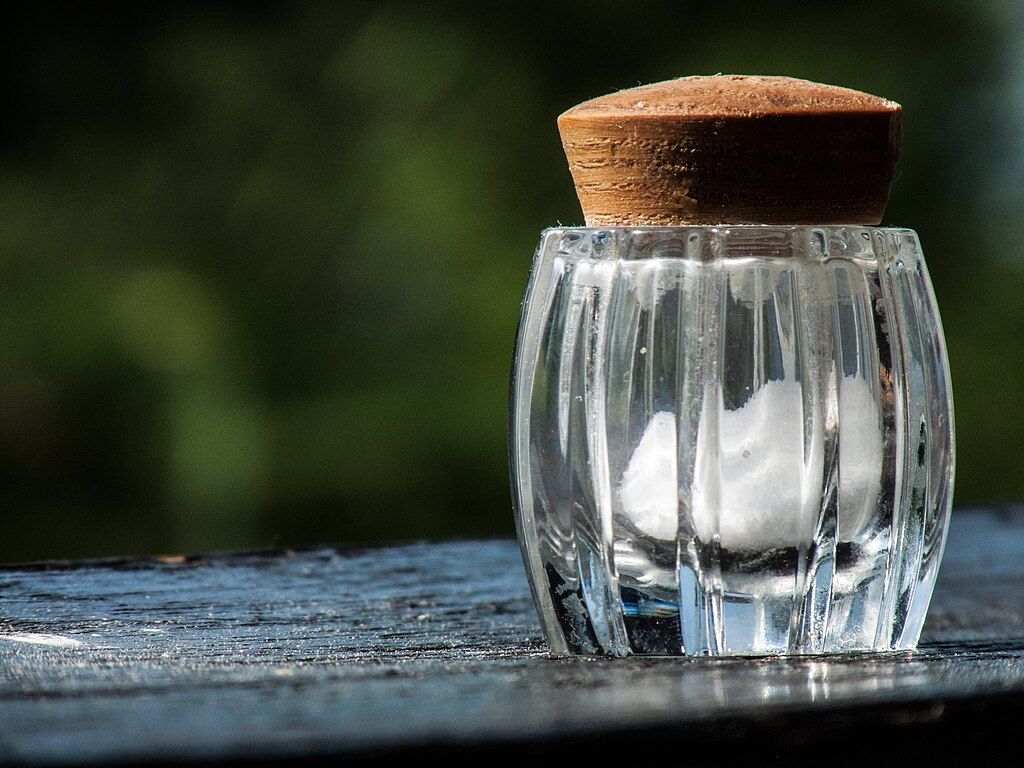
19 December 2023
You’ve probably noticed that in humid weather table salt clumps in the salt shaker and sticks to the top. That’s because at the molecular level salt’s ions have a net positive charge that attracts atmospheric water which has a net negative charge. Salt literally pulls water out of the air and builds crystals. This process can make the top of the salt shaker moist or dampen a salted road on a humid day.
Can salt’s natural means of pulling water from the air be used to gather water in a larger way? Researchers led by Marieh B. Al- Handawi investigated Athel tamarisk (Tamarix aphylla), a desert plant native to Africa and Asia that takes up saline water with its roots and secretes excess salt through its leaves.
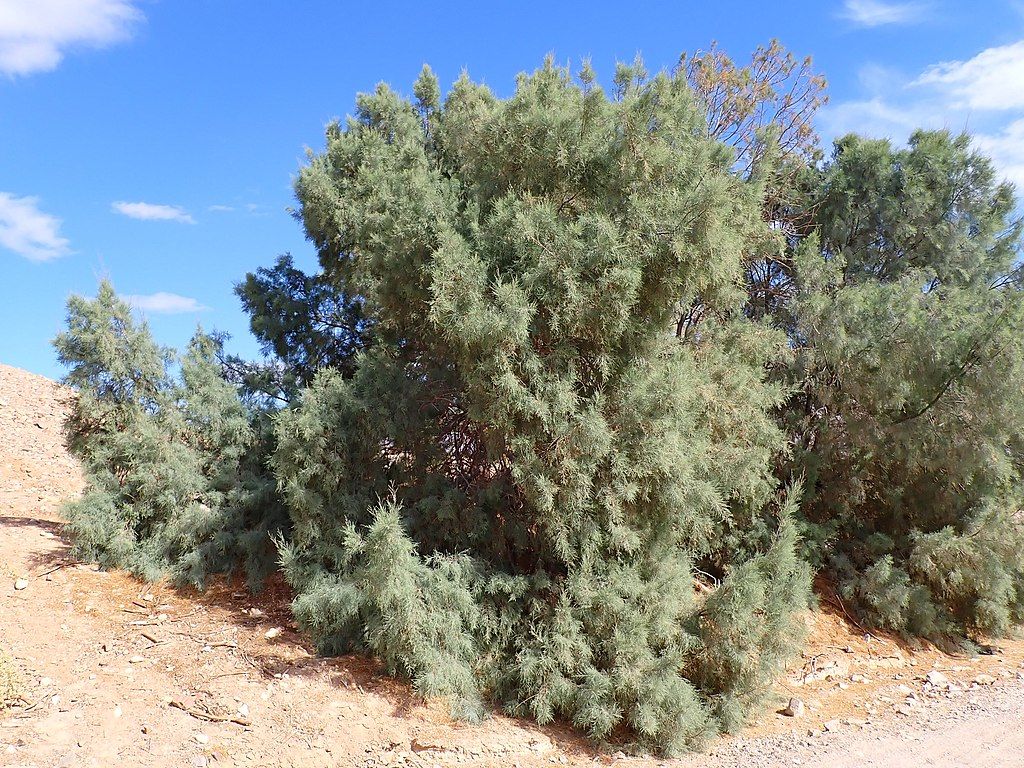
The tiny leaves are arranged alternately, almost wrapping the branches. The salt crystalizes on the leaves. Look closely and you can see tiny crystals.
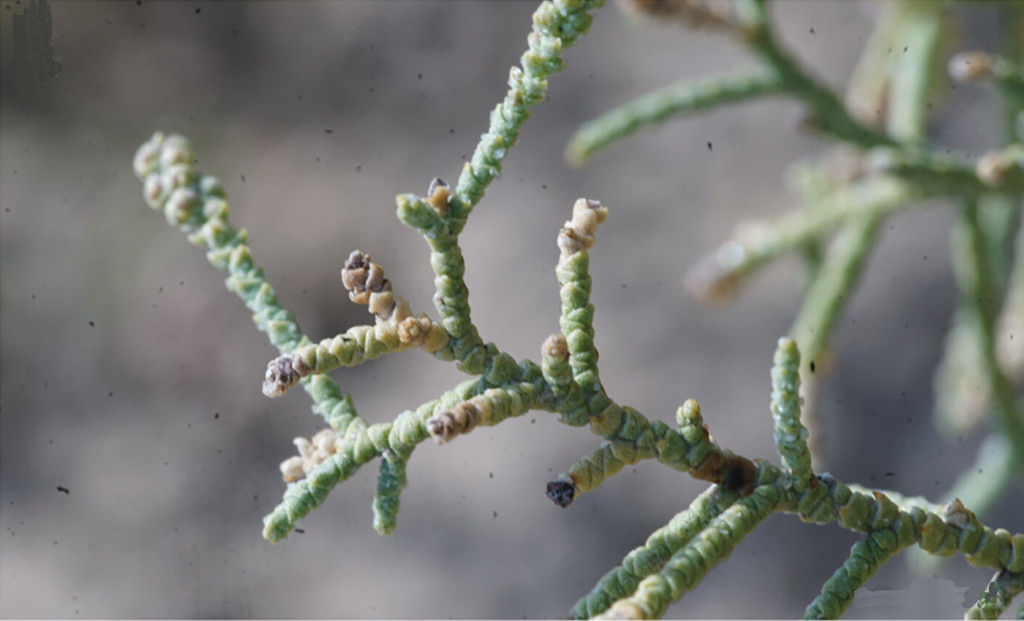
The smaller crystals stay on the plant and attract more water, especially overnight as shown on this branch in the early morning (8 a.m.) with condensed water droplets.
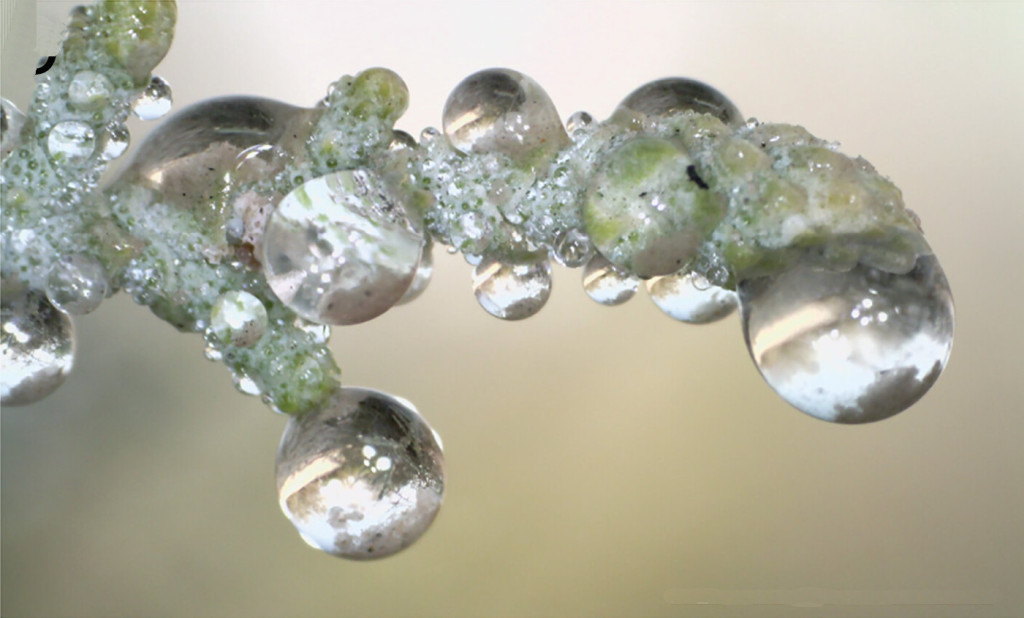
As the sun gets higher it evaporates the water, leaving behind larger salt crystals which fall to the ground.
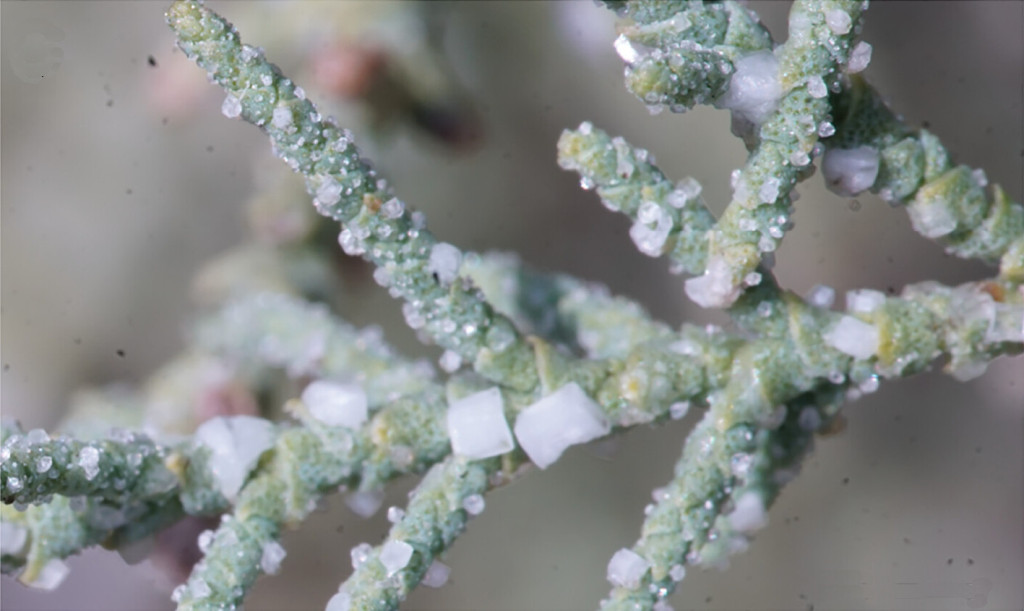
Every day the water cycle repeats: (A) branches attract water overnight, (B) water evaporates during the hot day while salt crystals grow, (C) water is gone and crystals are large, (D) during overnight high humidity the crystals attract water from the air and the plant absorbs the water. — paraphrased from PNAS: Harvesting of aerial humidity with natural hygroscopic salt excretions.
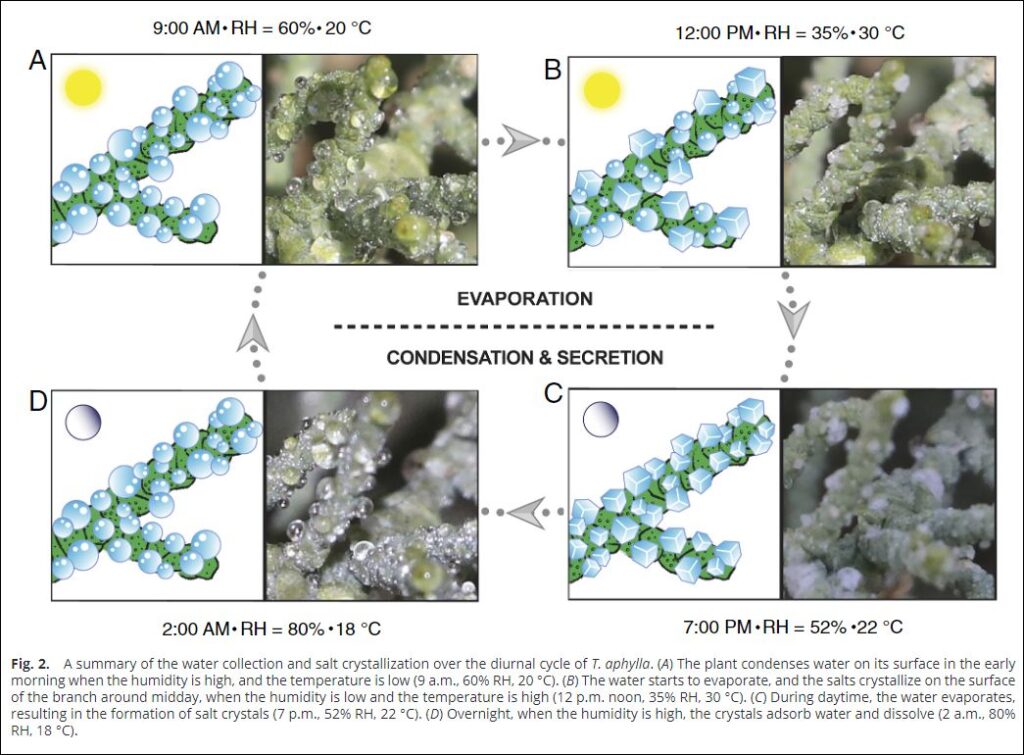
The tree is “drinking” from its leaves.
Researchers observed that at least one type of salt, lithium sulfate, forms small crystals that remain on the leaves and absorb water from the air. When the team added colored water to salty leaves, they watched the liquid stick to the crystal crust, then absorb into the plant’s leaves—evidence that the salty coating acts as a bona fide water collection mechanism.
— Science Magazine: Desert trees may pull water from thin, dry air using salt-encrusted leaves
The tree is very salt tolerant so this water collection process won’t translate directly for humans. But perhaps we’ll find a way.
For more information see Science Magazine: Desert trees may pull water from thin, dry air using salt-encrusted leaves or the PNAS publication Harvesting of aerial humidity with natural hygroscopic salt excretions.
(photos are from the Open Access PNAS article: Harvesting of aerial humidity with natural hygroscopic salt excretions)